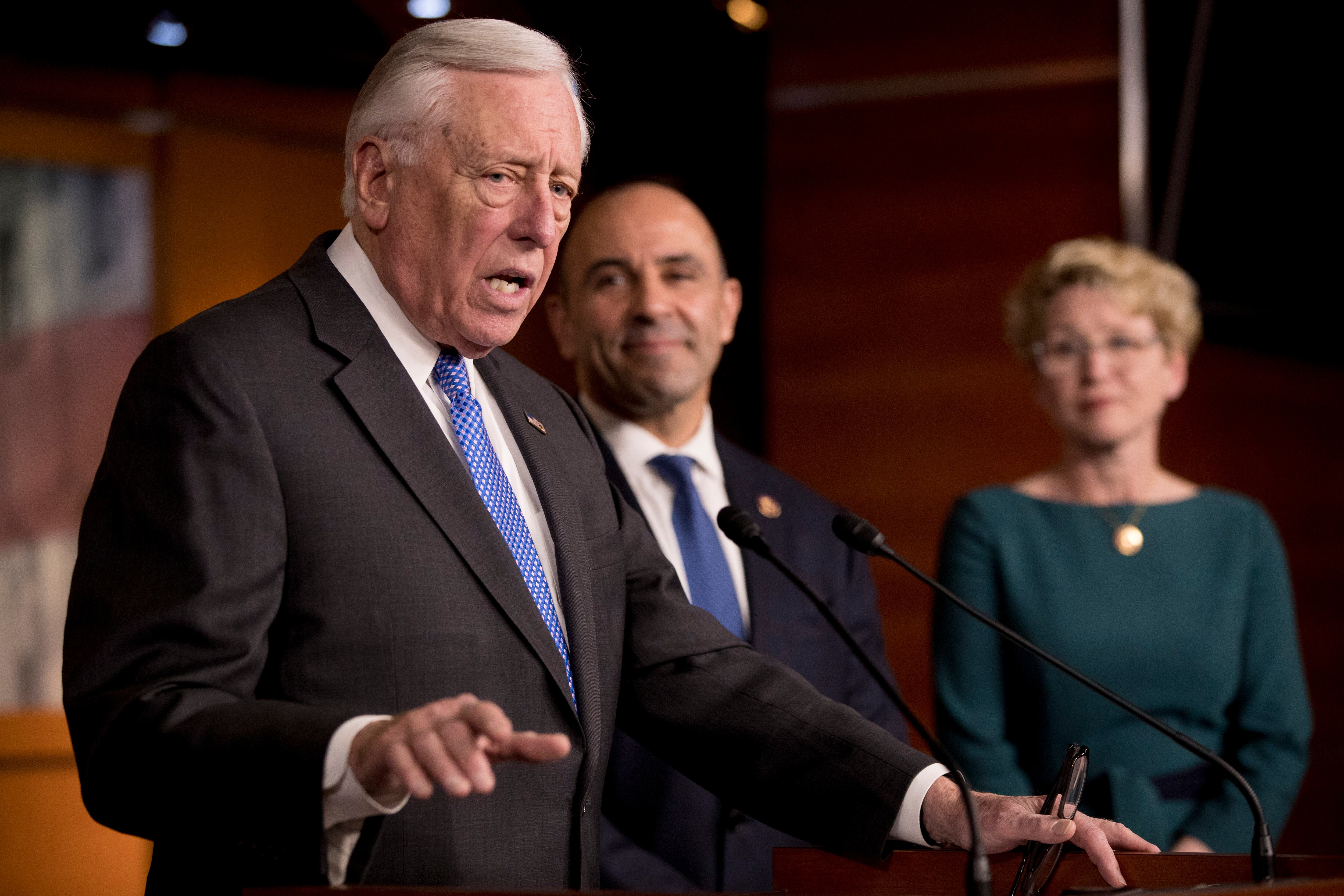Democrat-led efforts to block the administration’s plan to merge the Office of Personnel Management and General Services Administration through funding legislation won’t be a sticking point in upcoming budget negotiations, according to House Majority Leader Steny Hoyer, D-Md. While the White House may not like language in two appropriations bills forbidding the use of such funds to transfer agency operations, the administration would likely have to derail entire funding bills to remove restrictions.
The plan to eliminate OPM as an independent agency, first introduced in President Donald Trump’s June 2018 reorganization plan, has proven highly controversial, with some House lawmakers claiming that the White House did not have the authority to eliminate an entire agency.
According to Hoyer, who spoke to reporters at an Aug. 22 press lunch, the merger is simply “not going to happen.”
RELATED

“What a perverse recommendation that is. Here you have an agency that deals with buildings, bricks and mortar, and [there] you have an agency that deals with individual human beings, and what they have in common is beyond me, other than they’re federal agencies. And why they would suggest merging those two agencies is beyond me,” said Hoyer.
In fact, Hoyer said, many actions the Trump administration has taken to increase efficiency, such as the plan to move two of the U.S. Department of Agriculture’s research agencies outside Washington, D.C., have actually been for another purpose.
“We think it’s done not for efficiency purposes, but simply that they want to break up certain agencies of government because they’re hostile to government. It’s like merging OPM and GSA: I don’t think that makes any intellectual sense, but it makes sense because they want to eliminate OPM. Why? Because they don’t want OPM working on behalf of federal employees,” said Hoyer.
“I think the administration’s animosity toward government generally is what manifests what are not necessarily rational moves.”
And, according to Hoyer, the priority for Congress when it returns to session in September will be to get spending legislation for 2020 passed so that the government doesn’t experience another shutdown.
The top line for 2020 has already been set at $1.37 trillion, but both chambers of Congress will still have to work out the details of how much each agency receives.
“I am an appropriator, and I made it very clear in January that I was going to expect us to pass all appropriation bills by June 30. We have now funded, through the House, 96 percent of government. The only things we haven’t funded are the Department of Homeland Security and the legislative branch,” said Hoyer.
“The Senate has not passed a single appropriations bill, not one.”
The House and Senate will have to come to an agreement on legislation and get the president’s signature before Sept. 30, the end of fiscal year 2019, which does not offer a lot of time to pass the required 12 funding bills.
“One of the toughest bills is the one we haven’t passed through the House. The legislative bill is not the problem, because the Senate does its thing, we do our thing and both agree to the other, so that’s not a big deal. But the Homeland Security, as you know, has the [border] wall. And that’s one of the reasons I didn’t put that bill on the floor: it would have taken a long time, it would have been contentious, and I want to see if we can try and get something worked out,” said Hoyer.
“I think that we can get to agreement on most of the bills. A number of senators are talking about not doing any of their bills individually, but doing what we call an omnibus bill — in other words putting those 10 bills together.”
As it sits on the House side, the funding legislation also includes two important provisions for all federal employees: a 3.1 percent pay increase in the general government funding bill and the establishment of paid family leave in the National Defense Authorization Act.
"Now that’s for federal employees, but it makes a huge difference on the economy of our region,” Hoyer said. “Keeping them even with inflation, which is what the 3.1 does, is a great benefit to them individually but also a great benefit to our economy in the Washington metropolitan area, and also an enhancement in our ability to retain people.”
The concept of paid family leave for federal employees has been introduced in numerous individual bills without success, but inclusion in appropriations legislation may increase its chances.
“We put it in the Defense bill to give it a better chance of passage, and we’re going to fight for it,” said Hoyer. “I think there are some Republicans who will be for it.”
Both the House and Senate return to session Sept. 9, giving them about three weeks to reach consensus on all 12 spending bills.
Jessie Bur covers federal IT and management.





